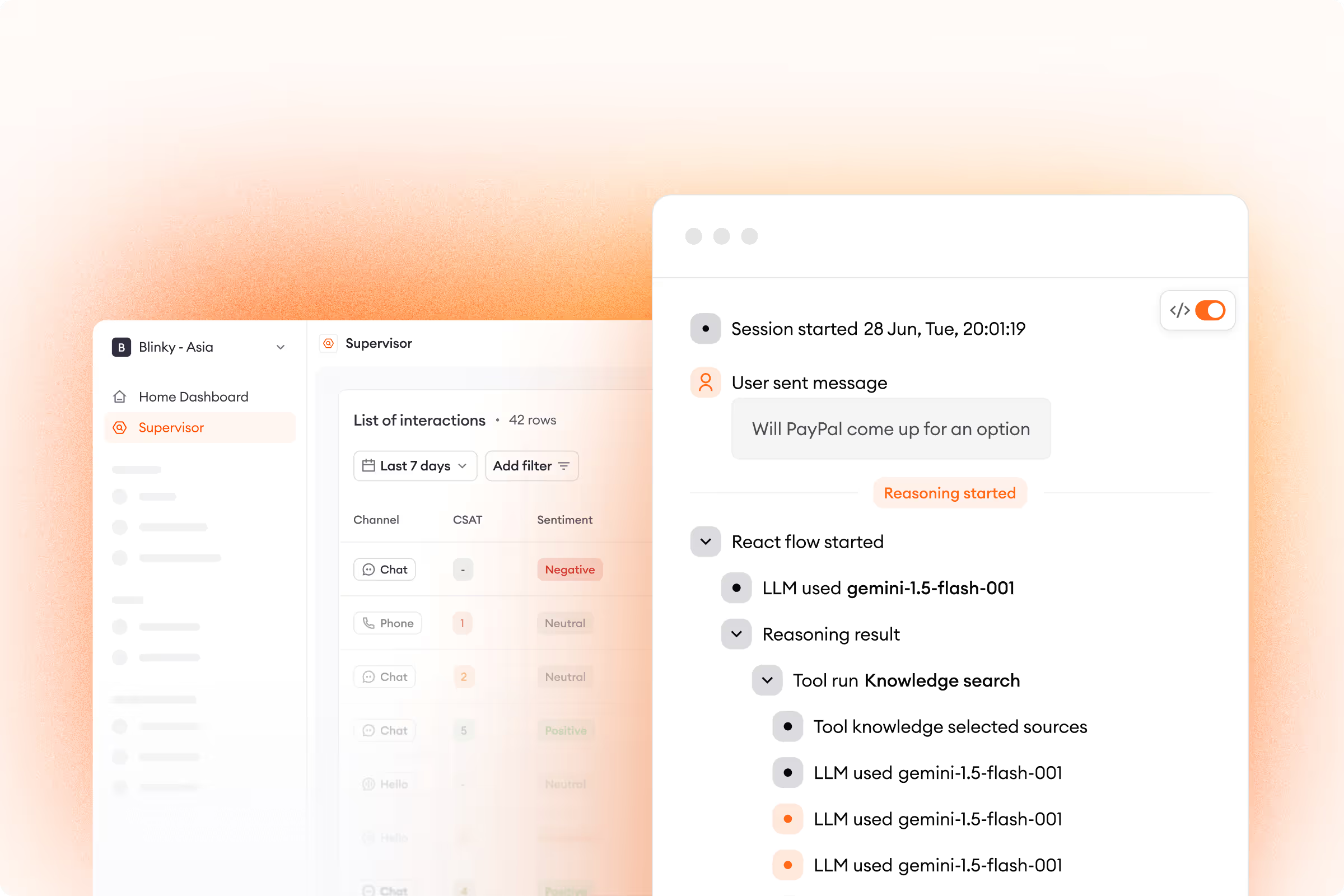Online shopping is meant to be easy and convenient, but it doesn’t always work that way. Even simple purchases can lead to a wide range of customer questions:
Is this the right size? How much is shipping? Where is my order?
The list goes on and on. And if you don’t have an effective way to quickly provide engaging answers, shoppers will likely take their business elsewhere.
How can support teams help with these diverse issues? The trick is providing a combination of proactive and reactive customer service. When used together, brands unlock the ability to deliver exceptional customer support every time, regardless of a customer’s specific needs.
Before you can start constructing your award-winning plan, it’s important to understand the differences between proactive and reactive customer support — along with the benefits and limitations of each. Doing so will allow you to create a complete customer service strategy that intertwines these two complementary types of support.
What is proactive customer service?
Proactive customer service occurs when you’re able to anticipate customer issues and reach out with a solution. Shoppers don’t start proactive customer service interactions — support teams do. They can step in, give guidance, and prevent customer complaints without having to wait for shoppers to ask questions first.
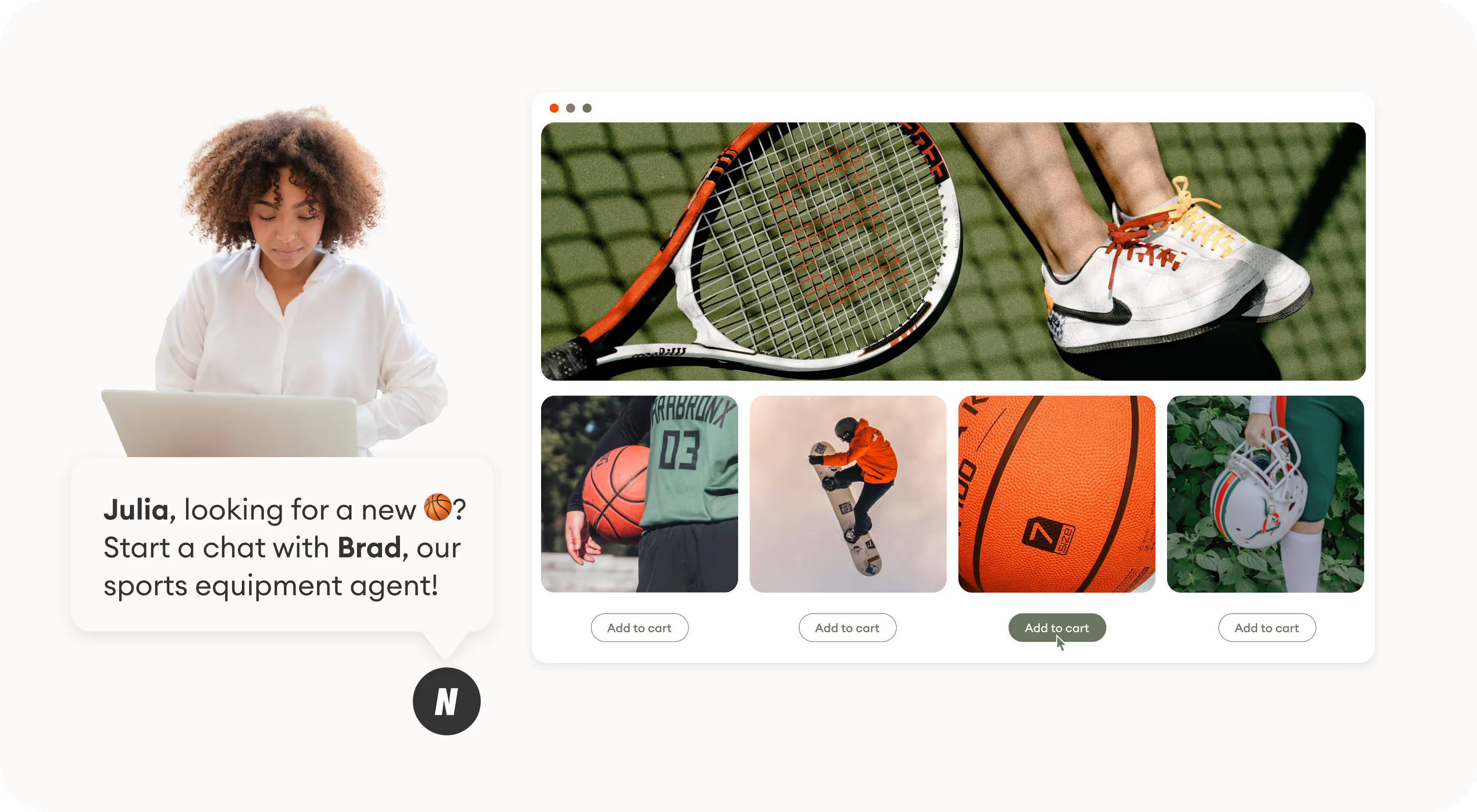
Why is proactive customer service important?
Because proactive customer service is preventative, many common issues can be avoided altogether. By stepping in, you’re removing potential roadblocks at various touchpoints along the customer journey and crafting a positive experience.
By tackling customer pain points head-on, businesses that employ a proactive approach can find it easier to build long-term customer relationships. Getting in front of your biggest complaints allows support agents to foster deeper trust with shoppers, which could, in turn, become a lasting competitive advantage.
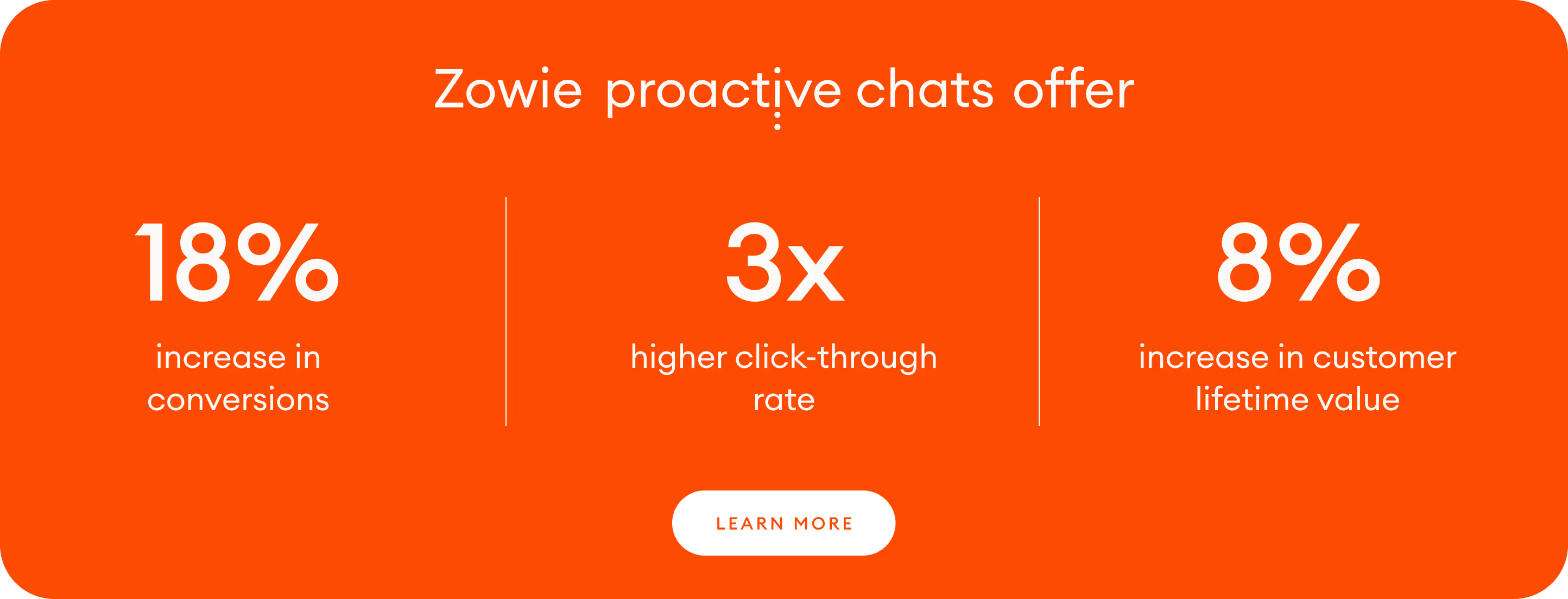
Examples of proactive customer service
While it might sound daunting, a proactive service strategy doesn’t need to be complex. Here are some basic examples of proactive support in practice:
1. Reaching out via automated chat
AI-powered support tools can proactively start customer interactions over chat by detecting if shoppers are struggling at key points of the customer journey in real time.
For example, if a customer is viewing several similar products, automation tools can instantly put them in touch with a product expert to help them decide which is best. Or if a customer has been stuck on your payment page for some time, you can open up a chat window and offer relevant info on everything from pricing and payment to shipping.
Find out how proactive chat helped Missouri Star Quilt Co. increase AOV by 47% in our customer success story.
2. Preventing cart abandonment
If a shopper adds something to their cart but never finalizes the purchase, businesses are able to automatically restart this customer conversation by launching a proactive chat. Check in on shoppers via chat, email, SMS, or social media to welcome them back to your website and give them a hassle-free option to continue checkout.
3. Upselling and cross-selling
Just because a customer is interested in buying one product doesn’t mean they have to walk away with that item alone.
Proactively upselling, cross-selling, and offering product bundles are all ways to get shoppers to buy more. Let shoppers know when they’re shy of your free shipping threshold and recommend items that’ll help them hit the necessary purchase value.
“AI chatbots can detect when online shoppers visit a product catalog and proactively ping them to offer product advice over chat. These proactive chats are a powerful way to recommend products at different moments in the customer journey.”
- Maciek Ciolek, CPTO & Co-Founder, Zowie
4. Personalizing interactions
Proactive service lets you anticipate what customers are looking for. By tracking a shopper’s history, automation tools can recommend products, provide shipping updates, and send out alerts on any issues that may impact customers or their orders.
Customer service teams can give shoppers the VIP treatment without them having to ask for it. Send out exclusive deals, gifts, or notifications about new products to deepen your relationship with them. Reward loyal customers on their birthdays or other special occasions so they know they’re appreciated. Even a simple order status update goes a long way.
5. Requesting customer feedback
While many customers will seek out help when they have an urgent issue, most shoppers won’t contact companies just to leave feedback. But brands that ask for customer suggestions can reap tangible benefits. Around 77% of customers have a more favorable impression of a brand that actually seeks out and applies feedback from respondents.
And feedback is the lifeblood of any service team that wants to improve its customer experience. To find out what shoppers are thinking, sending a brief follow-up message is an excellent way to learn things like customer expectations and track metrics like customer satisfaction scores.
Benefits of proactive customer service
1. Increased sales
Proactively assisting customers can yield sizable financial gains. In 2022, shopping cart abandonment rates hit 70%. This means ecommerce businesses are losing out on scores of customers right before they’re ready to make a purchase. If agents proactively jump in to facilitate the buying process by answering common questions, they can close more sales for new customers and return buyers alike.
.avif)
2. An enhanced customer service experience
Proactive customer care has the ability to remove barriers that would otherwise frustrate customers as they shop. It helps shoppers quickly find what they’re looking for, as there’s no need to fumble around a clunky FAQ page or self-service knowledge base.
With fewer service issues and substantial time savings, customer success teams can provide an elevated experience capable of catering to the top customer needs.
3. Greater customer loyalty
Proactively handling customer complaints boosts your shoppers’ chances of becoming return customers. Three out of four shoppers say they’re more likely to do repeat business with a brand that supplies personalized rewards.
And customer loyalty has a major impact on several metrics. Happy customers will help you bring about higher customer retention and lower churn, and they can even act as promoters who advocate for your brand.
What is reactive customer service?
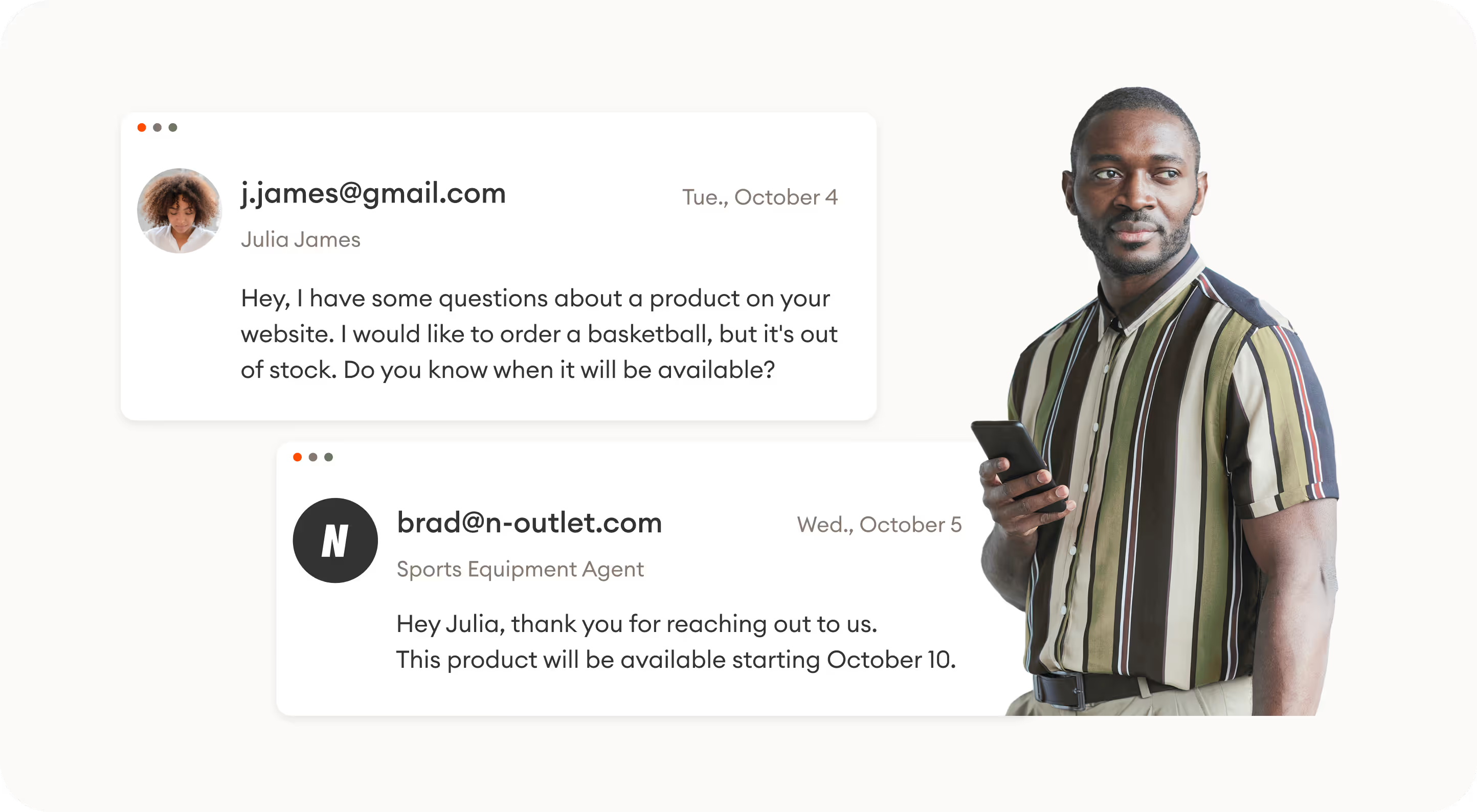
While proactive customer service provides support before it’s needed, reactive customer service responds to an issue after a customer has already reached out. In proactive service, your team makes the first move and contacts a customer. With reactive service, the customer initiates contact.
By its very nature, reactive support isn’t preventative, but that doesn’t make it any less important. Reactive customer service is an essential part of any customer support infrastructure. Teams can’t rely solely on proactive support. You still need agents to provide on-demand assistance when a problem can’t be avoided.
A reactive service approach can still be personable, available 24/7, and effective, but you’ll need some help from automation tools to get there. For example, leading AI chatbots are always on and can store customer data such as name, location, and buying history to deliver faster, personalized responses.
“Automating customer service with a virtual agent does more than handle repetitive tasks. It’s really a means to a greater goal — introducing customers to a fully personalized experience.”
- Maja Schaefer, CEO and Co-Founder, Zowie
Examples of reactive customer service
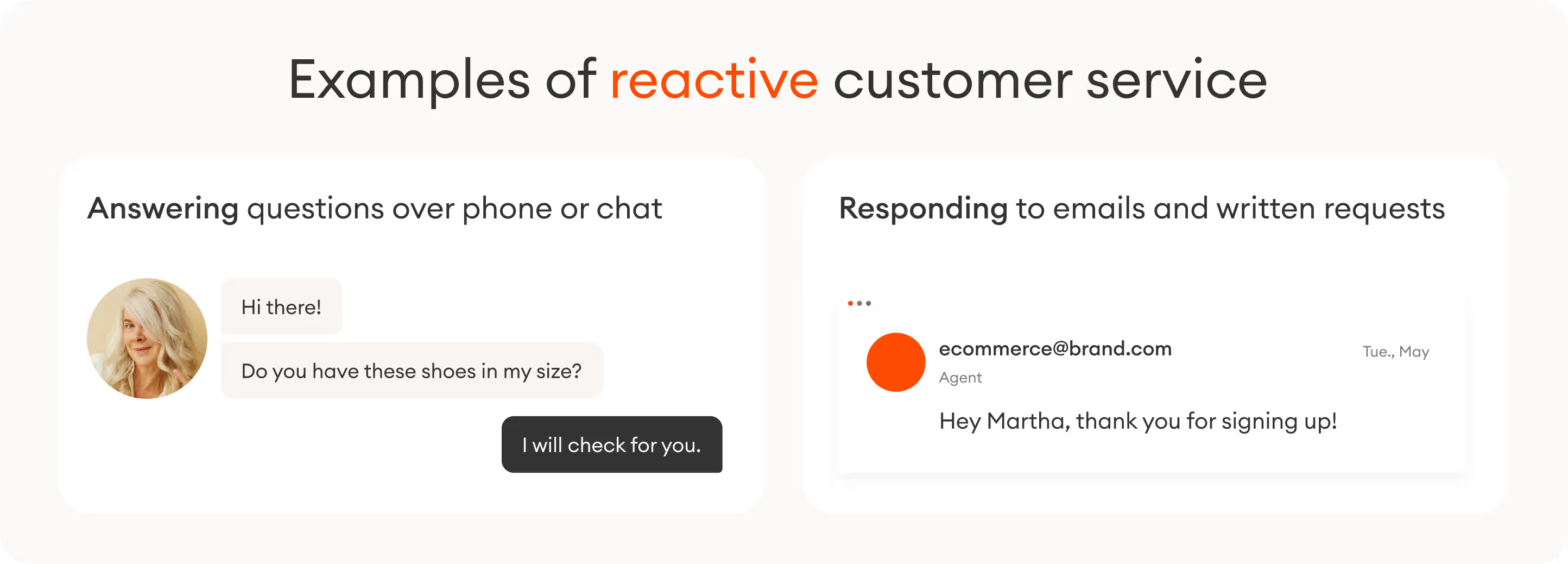
Below are the two most common examples of reactive customer service:
1. Answering questions over phone or chat
This occurs when a customer contacts a call center or enters a request into a chat box. The customer first explains their issue and then waits for an agent to find the information they need or a solution to their problem.
2. Responding to emails and written requests
Customers can also make use of reactive support by reaching out to a company’s customer support via email or an online contact form. Unlike phone or live chat, these channels are always available, but response times tend to be much slower, often taking over 24 hours.
Proactive vs reactive customer service
Is it better to be proactive or reactive?
In a nutshell, good customer service should be both. The best teams don’t try to offer just one but instead use them together in harmony to give their customer base the best of both worlds.
Reaching out to customers at frequent pain points is valuable, but having competent agents on call to handle urgent cases as they emerge is just as vital.
Above all else, customer support teams need a clear plan. Everyone should be on the same page concerning when it’s best to help customers either proactively or reactively. Once these guidelines are established, you can effectively formulate a data-driven proactive customer service strategy.
Zowie: a perfect mix of reactive and proactive customer support
To offer meaningful customer care, reactive service is fundamental — you’ll always need to be there when customers need help.
But proactive service lets businesses take their support much further. React to customer queries when appropriate, but know when to step in and take preventative measures.
Leading customer service automation solutions know that reactive and proactive capabilities are vital for companies today and are capable of handling both. Zowie’s AI-powered software blends reactive and proactive support to help teams unlock their full potential.
.avif)
.avif)
.avif)

